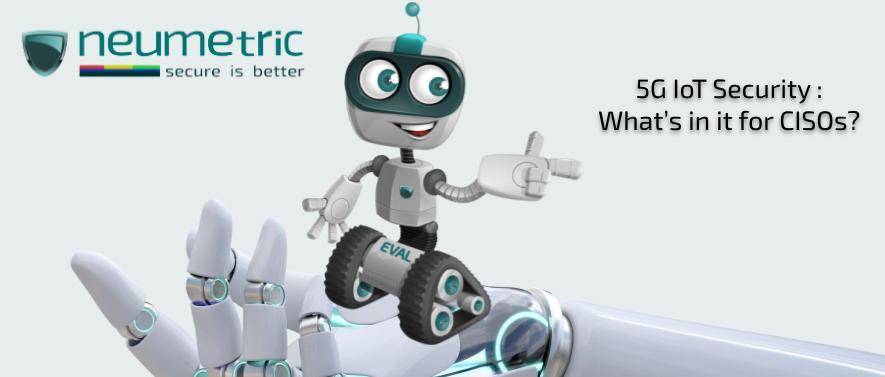Table of Contents
ToggleIntroduction
5G is one of the biggest buzzwords in the tech industry right now. It’s an exciting new technology that promises fast speeds, broader coverage, and lower latency compared to 4G LTE networks. While 5G digital cellular networks are being set up around the world, it will surely take years for widespread coverage. This is the best time to find a way to ease into it while keeping security in mind.
But how does it affect your business and what do you need to know about 5G IoT security? This article covers all things IoT and 5G-related, including how they work together (or against each other) as well as some of their most pressing security issues.
How to get ready for 8 ways 5G mobile networks may alter IoT security
There are a few reasons why 5G IoT Security is more secure than 4G.
- 5G will enable faster data transfer speeds and lower latency, which means more reliable connections for all devices. This is especially important for IoT devices that rely on real-time information from their cloud services to function properly.
- 5G will allow for more devices to be connected at the same time, which means there will be an increased need for data-intensive applications that consume less power.
- 5G will make it possible to have more devices connected over longer distances—even globally—without experiencing any drop in service quality or speed. This will be especially important for IoT devices that need to connect with each other, such as sensors and cameras.
- 5G will introduce new standards for security and privacy, which will allow companies to build stronger protection into their products and services.
- 5G will support the development of new IoT technologies that we haven’t even imagined yet, such as autonomous vehicles and smart cities.
- 5G will allow for even more bandwidth-intensive applications to be developed, such as augmented reality and virtual reality. 5G IoT Security will help businesses and consumers alike to be more productive, which means you can get more done in less time.
- 5G has the potential to revolutionise our healthcare system by providing faster access to medical data from remote areas of the country or world.
- 5G will allow for more accurate weather forecasting, which will save lives by improving disaster response.
What makes 5G better than existing technology?
The network infrastructure is built differently: 5G uses Software-Defined Networking [SDN] and Network Function Virtualization [NFV], which means that each cell has its own controller, or “brain.” This makes it easier to manage and update the network securely, because each cell can be managed separately rather than in one large piece of equipment like with 4G.
It uses multiple simultaneous frequencies for transmission—a feature called Multiple Access Technologies [MAT]. For example, it can use both licensed bands and unlicensed spectrum simultaneously to increase capacity and throughput by up to 10X over previous mobile generations. This means less interference from other devices using the same frequencies as you’re using, which in turn reduces your risk of attack from hackers who might try to intercept your data by eavesdropping on those frequencies.
The 5G IoT Security Risks
The digital cellular network, 5G, opens up a whole new world of opportunities for services that take advantage of the higher speeds and lower latencies that the digital cellular network will offer. But with most significant technology advances there come risks for both network operators and users. Let us look at some of the risks that come with 5G Technology:
For the network operators, the architecture of the 5G network for tomorrow is going to be complex. While the infrastructure that supports the service ‘slices’ will be virtualized and orchestrated, the Multi-Access Edge Computing required to support new services will open up mobile infrastructure to a broader range of vendors. The intricacy of the control-plane to manage services and end-point connectivity will increase and so will the potential for security issues from compromised or poorly behaving devices and applications.
For consumers, privacy would become a big issue. One of the main uses of 5G is massive machine type communications that support the ongoing proliferation of a large number of low power, low-cost IoT devices.so, we can expect a growth in information gathering and exchange.
Organizations will be able to gather a lot of data about online and offline activities. This will allow them to create a more detailed picture of customer behavior. This will allow services tailored to consumer needs, habits, and locations, but it will also enable a new wave of social engineering attacks that would target individuals and the businesses they work within.
However, the major concern is that even if that data is anonymized, it is possible to construct a virtual identity for a user, which can be used to drive analytics and other decision-making systems. This is where regulation needs to be evolved. Users may need protection from pseudo-automated discrimination that can occur without reference to their real-world identity.
5G Network Security Challenges and Emerging 5G Cybersecurity Solutions
The following are some of the key security challenges:
- New 5G technologies require early planning to ensure that they are not only secure but also compatible with existing industries. This means that Organisations will need to develop new or revised policies regarding how they protect their networks and data collection points as well as how they handle user authentication and access control on these devices.
- Mobile device management [MDM] solutions will play an important role in this process because they give people control over their mobile devices while helping companies maintain compliance standards by blocking unauthorised apps from being downloaded onto them, among other things.
- IoT devices form part of a larger ecosystem within which IoT application delivery takes place–and it’s important for developers to understand how such systems work so that they can build applications securely.
- Many of today’s IoT platforms rely on cloud computing services for storage and processing power, which means there are additional layers involved when it comes time for developers/security teams working within those environments
5G is expected to provide low-latency and high-speed connectivity that can be utilised in many ways, including the following:
- Connected and Autonomous Vehicles [AV]
- Smart cities
- HVAC control systems for buildings and commercial spaces
- self-organising networks [SONs], etc.
Conclusion
5G is the next big thing in connectivity, and it’s here to stay. With the technology being rolled out across multiple countries over the next few years, it’s important for CISOs to understand what 5G means for their companies.
Neumetric, a cybersecurity services, consulting & product Organisation, can help you reduce your security cost without compromising your security posture. Our years of in-depth experience in handling security for Organizations of all sizes & in multiple industries make it easier for us to quickly execute cost-cutting activities that do not bring value to you, while you continue focusing on the Business objectives of the Organization.
The cybersecurity experts at Neumetric believe that at the most basic level and to protect the device fleet against the vast majority of common attacks and mass-malware outbreaks, Chief Information Security Officers should:
- Select manufacturers or vendors who can assure that they provide ongoing support and software updates for the devices.
- Use up-to-date software and put up a process in place to assess new vulnerabilities that are disclosed so that they can be managed appropriately.
- Have a visibility solution or service in place so that the behaviour of devices can be monitored so as to spot and investigate deviations from the norm.
FAQs
How does 5G provide security?
5G networks are more secure than 4G networks because they’re built on a new architecture, which is more secure. They also use a new type of encryption, which makes them even more secure than the previous generation of networks. The New radio Encryption Algorithm [NEA] and the New radio Integrity Algorithm [NIA] are two of three ciphering and integrity algorithms used by 5G.
What does 5G do for IoT?
5G is capable of performing faster than 4G giving up to 1-millisecond latency. This provides a broader range of possibilities for IoT devices that need to perform at high speeds, such as autonomous vehicles or remote monitoring systems.
5G also has more reliability than 4G, so when an IoT device establishes a connection with another device (such as another car), it can stay connected without dropping out due to poor signal quality or other reasons. This increases the usefulness of these types of devices by ensuring they will always be able to communicate effectively with each other regardless of their location or environment.
Are there security issues with 5G?
There are security risks associated with new technologies. While it’s too early to tell what these might be, there is a chance that hackers will find ways to exploit them.
- There are many security concerns about 5G. These include the creation of new types of threats, new attack vectors, and the ability to use 5G for spying and eavesdropping.
- The increased speed and capacity of 5G networks may make it easier for attackers to launch DDoS attacks or steal data from mobile devices.
How does 5G affect cyber security?
5G is a new technology that will bring with it new challenges and opportunities. For CISOs, there are two main concerns:
- 5G networks may be more vulnerable to cyberattacks than 4G or 3G networks.
- Hackers have more ways to access your network through 5G connections, which can lead to serious security breaches.





